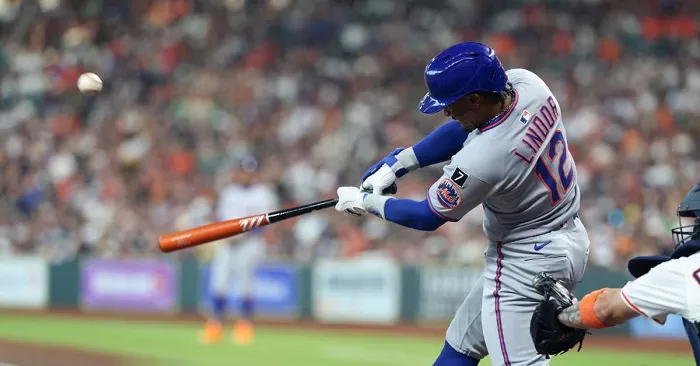Francisco Lindor recently reflected on a game against the Miami Marlins, where his ability to adjust at the plate stood out. In his first at-bat against Sandy Alcántara, the Cy Young Award-winner who returned this season after a year-long absence, Lindor fell behind 2-1 before grounding out weakly.
However, his second at-bat against Alcántara turned out differently. With a runner on third, Lindor used the knowledge he had gathered about Alcántara’s pitching to deliver a base hit.
“I had a better game plan against him and knew how the ball was moving,” Lindor said. “Ended up getting a base hit.”
Of course, Lindor had prepared for the game by studying tape and possibly even practicing against a robotic simulation of Alcántara’s pitches using the Trajekt Arc machine. But he acknowledged that there are nuances to facing a pitcher live that can’t be fully understood until you’re in the batter’s box.
“It’s the way the ball moves. How the weather affects his outing, if he can locate his pitches, or if his fastball feels different,” Lindor explained. “You also learn about the umpire, the catcher, and even how the infield is positioned. You can study film, but until you’re in the moment, it doesn’t always play out the way you expect.”
Although the Mets lost the game 4-2, Lindor’s single did help score a run. If he had had a chance to face Alcántara a third time, the numbers suggest he might have done even more damage.
A Third Time’s the Charm for Hitters
It’s a well-known fact that batters tend to perform better when facing pitchers for a third time in a game, a phenomenon often attributed to the “times through the order penalty” for pitchers. Typically, pitchers struggle when they face the same hitters multiple times, which is why many starters are pulled before the third time through the lineup. Alcántara, for example, has allowed a .603 OPS to hitters the first time he faces them, but that number rises to .718 if he’s left in to face them a third time.
While much has been researched about the challenges pitchers face when facing batters a third time, less has been studied about how hitters perform better as a game progresses. A recent Baseball Prospectus article explored this “times through the order” boost for batters, revealing that some hitters excel at adapting as the game moves forward. The study found that Lindor was the best in the league at improving as the game went on, with his expected wOBA increasing by .027 points from his first to third plate appearances.
When Lindor was informed of this finding, he nodded in agreement, though he was still a little surprised.
“It makes sense, it makes sense,” Lindor said. “I do feel more comfortable as the game goes on. But I never think of it as, ‘I’m the best, I’m the best.’ My confidence doesn’t work like that.”
Lindor knows he’s good at adapting and gathering information as the game progresses, but he remains focused on the process rather than viewing himself as the best. His ability to improve as a game continues, however, is a skill that has become a key part of his success at the plate.
You Might Be Interested In:



























